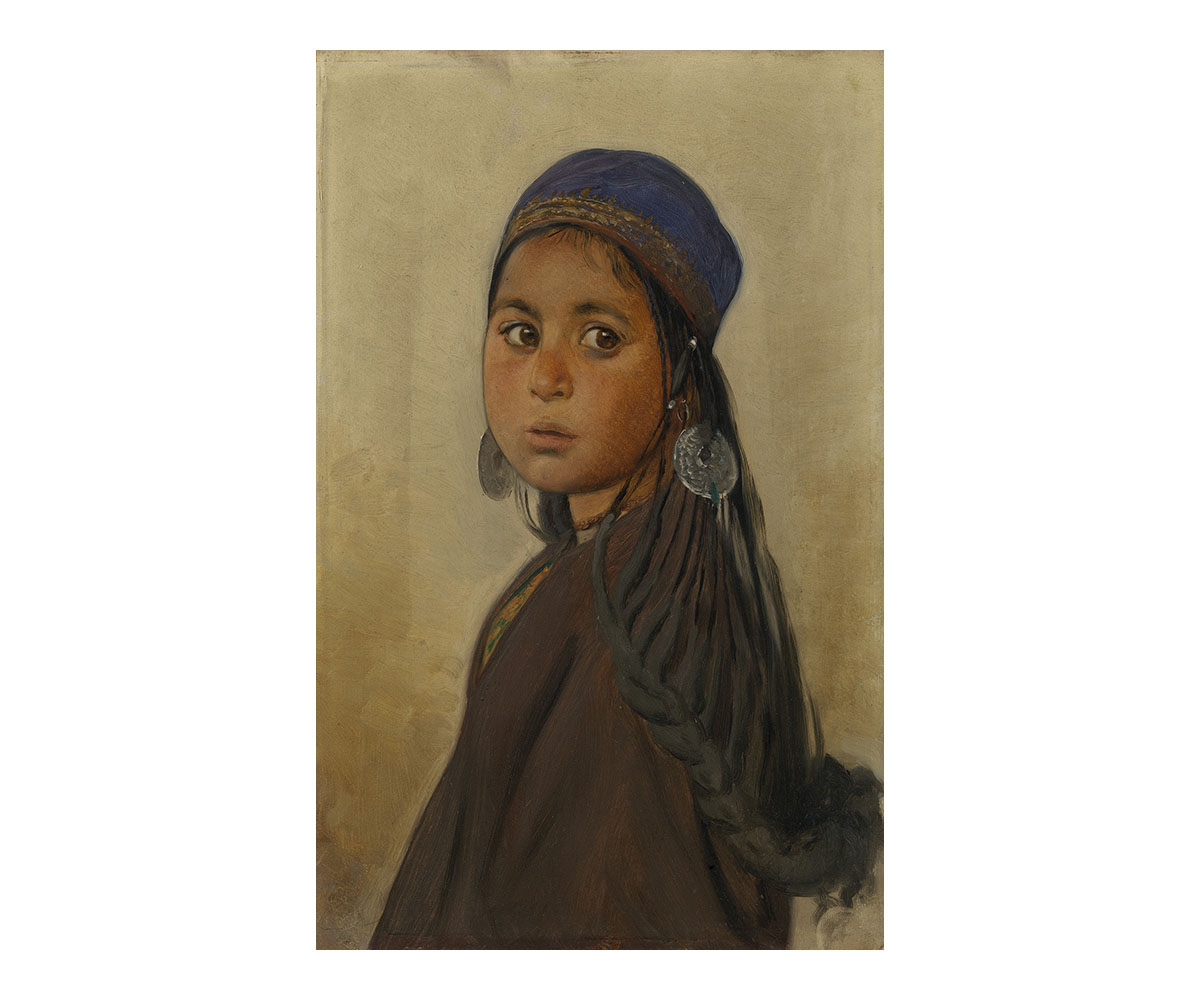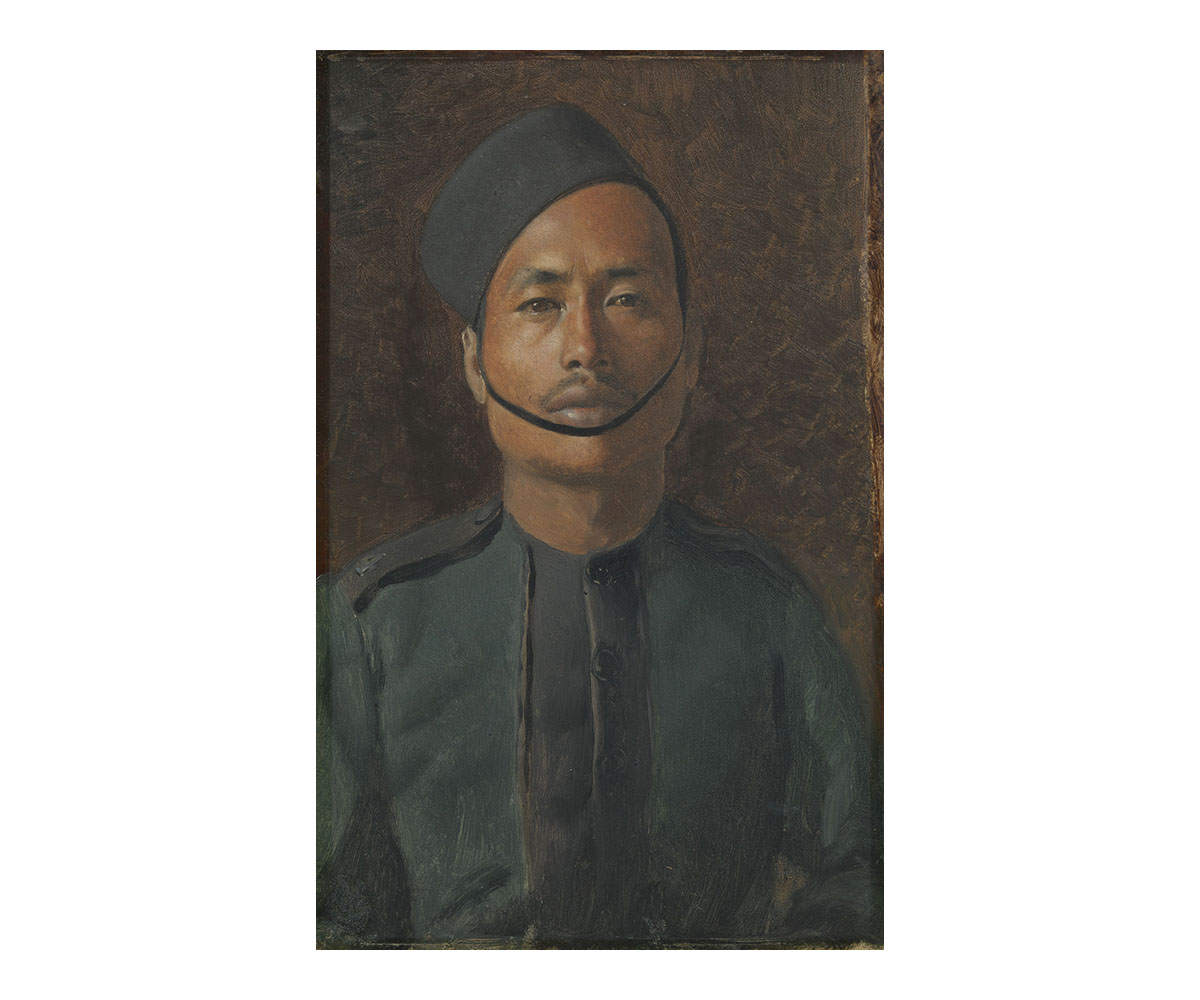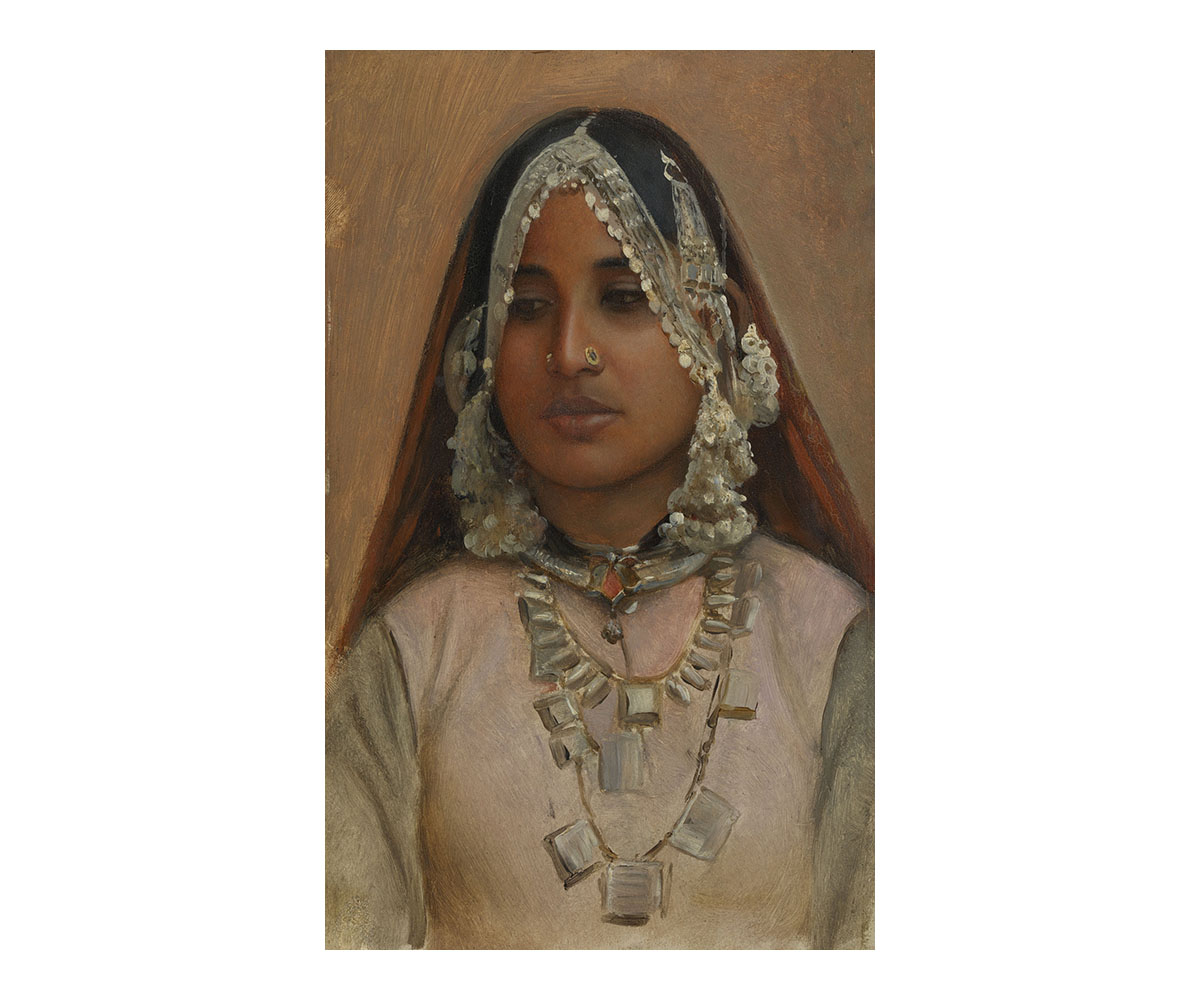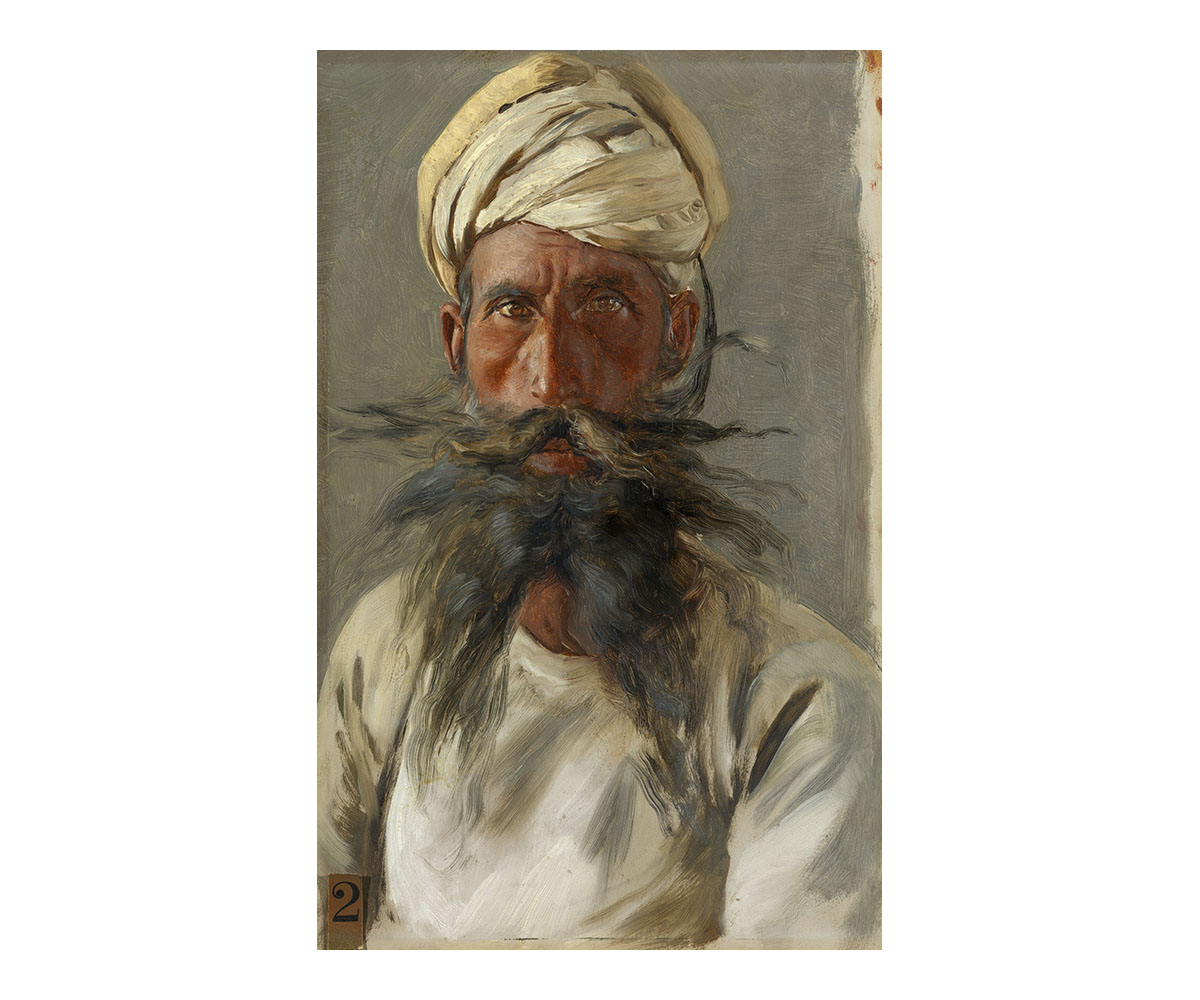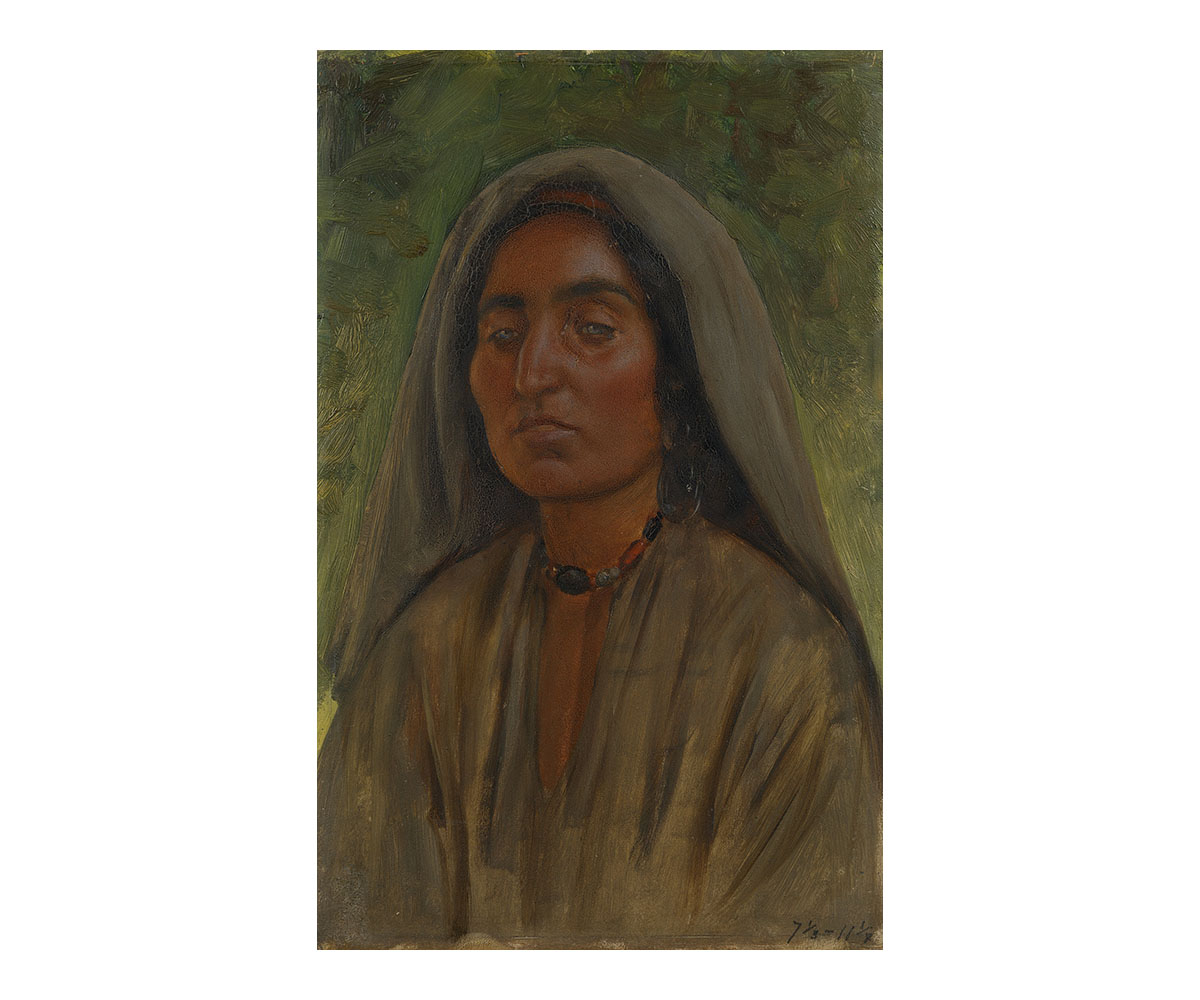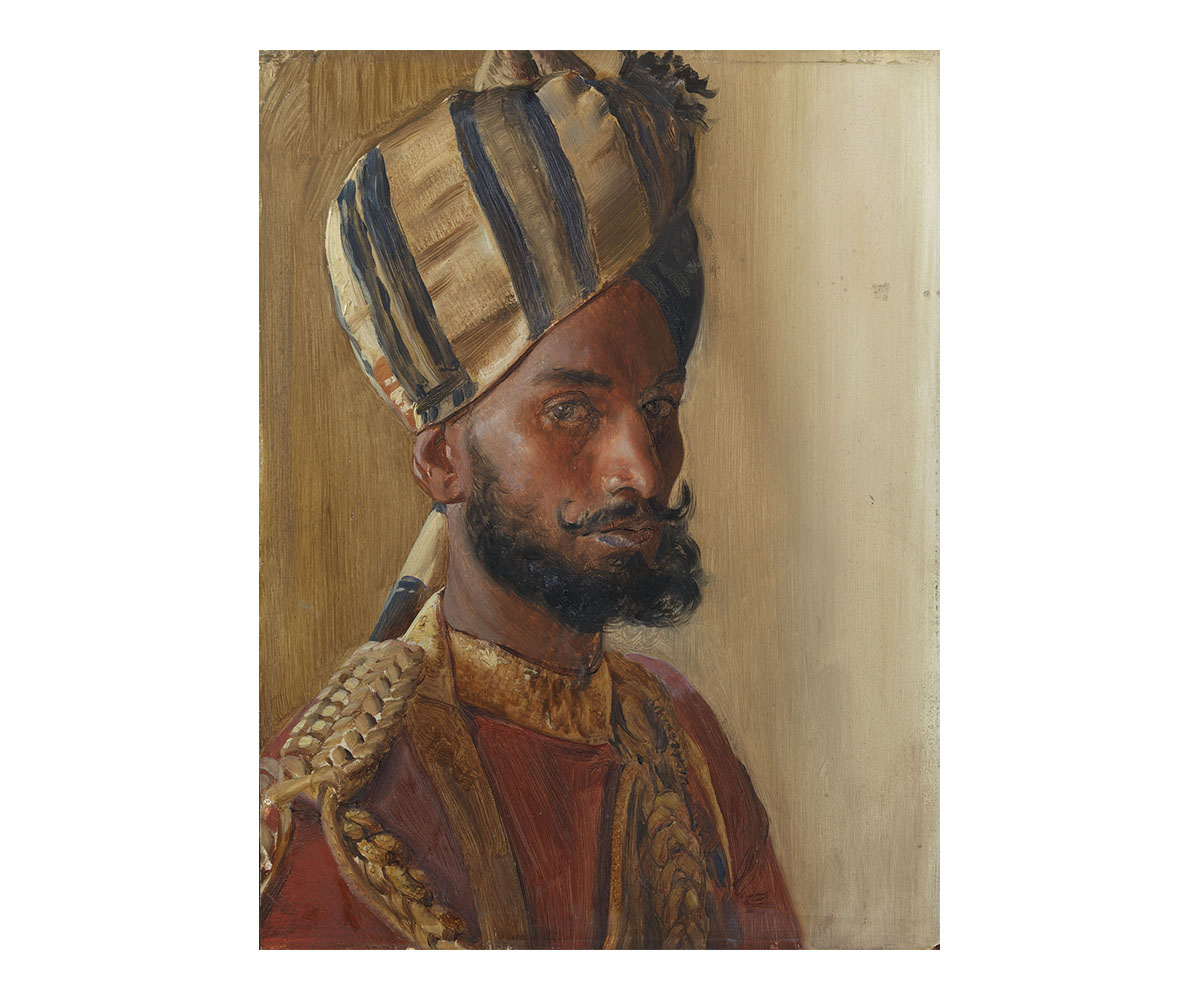PERSPECTIVES
‘Heads’ for the Queen: Rudolf Swoboda’s Indian Portraits
What are portraits of members of different Indian ethnicities and indigenous communities doing in a former royal residence in England?
In 1886, Queen Victoria commissioned the Austrian orientalist artist Rudolf Swoboda to visit India and sketch the “heads…of the various types of the different nationalities.”
The result was this series of around forty paintings — which still hangs in the Durbar Corridor at Osborne House, Queen Victoria’s residence on the Isle of Wight.
The Queen’s request stemmed from her enthusiasm for the five portraits Swoboda had painted of ‘live’ Indian artisans during the 1886 Colonial and Indian Exhibition, a six-month spectacle of imperial culture, organised to celebrate Queen Victoria’s jubilee. During the exhibition, these artisans performed their specific trade as an authentic display of an Indian village in which artisans created handicrafts unsullied by mechanical production. One of these portraits depicted Bakshiram, a 102-year-old potter from Agra, who the Queen was particularly taken by, even stopping to listen to him speak in “Hindostanee” at the exhibition.
During his travels across India, Swoboda experimented with different profile views of the ‘heads,’ as seen in these portraits. You can see how he used frontal or three-quarter profile views for some and side profiles for others, varying the angles of their gaze. The detail with which Swoboda recorded the features and profiles of his subjects was perhaps meant to accommodate the Queen’s request to capture the ‘types’ of different ethnicities rather than individual personalities.
The final paintings were not only well received by the Queen, who is said to have remarked, “such lovely heads…beautiful things,” when she first saw them, but also by her contemporaries such as Sir Howard Elphinstone who thought they were “very clever…and most characteristic of the different types.” This scientific curiosity in representing ‘different types’ recalls another colonial collection: The People of India, an eight-volume catalogue published between 1868 and 1875, that contains some five hundred photographs of India’s various ethnicities. David MacDougall, an anthropologist, notes that this collection presented human beings as scientific specimens as neatly “as butterflies impaled on pins.” Individuals were seen as demonstrating the characteristics associated with their “type,” regardless of their actual personalities or attributes, which was part of the broader dehumanisation perpetuated by colonisation.
In addition to his portraits, Swoboda also painted landscapes that conveyed the serenity of village life to appeal to the aesthetic ideals of his Victorian audience, whose nostalgia for the green pastoral English landscapes that predated the Industrial age was transferred to how they viewed rural areas in their colonies. His painting of a village scene, A Peep At the Train, captures an idyllic imagination of Indian rural life. In 1888, Swoboda also painted the Queen’s favourite and most trusted attendant, Abdul Karim, known as the Munshi. Queen Victoria’s diaries reveal that she also made sketches of family and friends, and quite a few were of the Munshi. According to the art historian Saloni Mathur, these portraits exhibit how the Queen and Swoboda were both drawn towards and invested in documenting “authentic, exotic or non-modern Indian subjects,” a desire Mathur says is connected to the ideological agenda of imperialism.
The imperial fascination for these portraits hints at the scientific distance from which these ‘ethnic types’ were viewed and also captures the colonial affection for an ideal of colonised India and its rural landscapes. We can see how these images sit at an uncomfortable confluence — while they portray their subjects with a romanticised dignity, they also reduce them to an idealised representation of an ethnic type, stripping them of their individuality.
Bibliography
Mathur, Saloni. “An Indian Encounter: Portraits for Queen Victoria.” Wasafiri 17, no. 37 (2002): 50–52.




